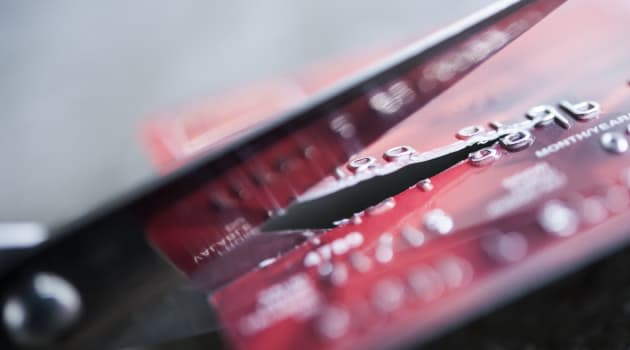What To Do If You Fall Behind on Credit Card Payments

Are you waving a white flag when it comes to your credit card bills? More Americans are.
Early in the new year is traditionally a challenging time to keep up with credit card payments, since many accounts are still carrying charges from the holiday season. But the stats for 2018 are particularly bad. The credit card default rate increased to 3.57% in January, the highest level in almost five years, according to recent report from Experian and S&P Dow Jones Indices. The good news is that it’s well below the high-water mark of 9.15% recorded in April 2010, in the aftermath of the Great Recession.
You may not yet be in default—when the credit card company puts your account in collections. But missing just a few payments is still no joke. Your credit score will take a hit. Late fees and interest charges pile up. If your issuer doesn’t close your account, it will likely shrink your credit line. You may also lose any rewards for travel or cash back you’ve accumulated so far.
Here’s a four-step plan to get back on track.
Put the credit cards down
Cut up your cards, says Adam Wie, a certified financial planner in Jacksonville Beach, Florida. That way you don’t add to any of the debt, but the accounts remain open. “Then, make yourself pay cash for everything,” he recommends. “You’ll be surprised how quickly your spending will decline when you have to hand over actual cash for purchases.” Any extra money you save from curbing your spending can go right to paying off those cards.
Focus on paying back
Make a budget to determine how much discretionary income can go to your credit card bills. If your leftover income is enough to pay the minimum on all your cards, plus more, then start chipping away. ValuePenguin recommends paying more than the minimum on one balance until it’s paid off, while also paying the minimum on the rest. Choose the target balance in the following order:
Smallest balance with highest interest rate
Highest balance with highest interest rate
Highest balance with lowest interest rate
Smallest balance with lowest interest rate
However, if one card, regardless of its rate, has a very small amount that you can wipe out in one month, go for that one first, says Jon Ten Haagen, a certified financial planner in Huntington, New York. “It’s a psychological win to knock one off the list upfront,” he says. Automate a specific amount for the targeted balance and just the minimum payment for the others to stay on track.
Lean on other credit
Take a lesser-of-two-evils approach and consider other credit options that can pay off your card debts, but at a lower interest rate—ultimately saving you money in the end.
Balance transfer card: If your credit is still good, you can qualify for a balance transfer card with a 0% APR for a limited time, typically between 12 and 18 months. Just move the balance of one or more cards to the new card and spend that zero-percent period whittling down the debt, without building up interest. These charge a fee for the transfer, generally 1% to 3% of the balance. You also may not qualify for a credit limit that is large enough to take on all of your debt.
Personal loan: Most mainstream banks and credit unions offer personal loans that can be used to pay off revolving debts, such as credit-card balances. The installment-loan structure makes it easier to stay on track with payments and work toward the end date. You still have to pay interest on debt—versus the interest-free option of a balance transfer card. But if you have a fairly high credit score, you’ll probably get a lower interest rate on a personal loan than you have on your credit cards.
Home equity: Homeowners can tap the equity in their home through a loan or credit line (HELOC). The interest rates on these products are much lower than on credit cards. The downside is that the loan is secured by your home, so if you don’t make the payments, you risk losing your home. You can also refinance the loan and pull some of your equity out in the process to pay off your debts.
Seek outside help
If you realize that there’s simply not enough money in your budget to satisfy even the minimum payments on your debts, ask your card issuer to recommend a credit counseling service that can set up a debt management plan, or DMP for short.
Under these plans, a credit counselor works with your issuers to get a lower monthly payment for each of outstanding balance based on your income and expenses. You typically get a lower interest rate, but the total debt you owe stays the same. There may be fees both to set up the plan and to maintain it, but these charges are typically modest when you use a reputable counselor.
You make one monthly payment to the credit counselor, who then distributes the funds to each card issuer on your behalf. Most DMPs take 26 to 60 months to complete. While enrolled, you can’t use any of the credit cards in the plan.
